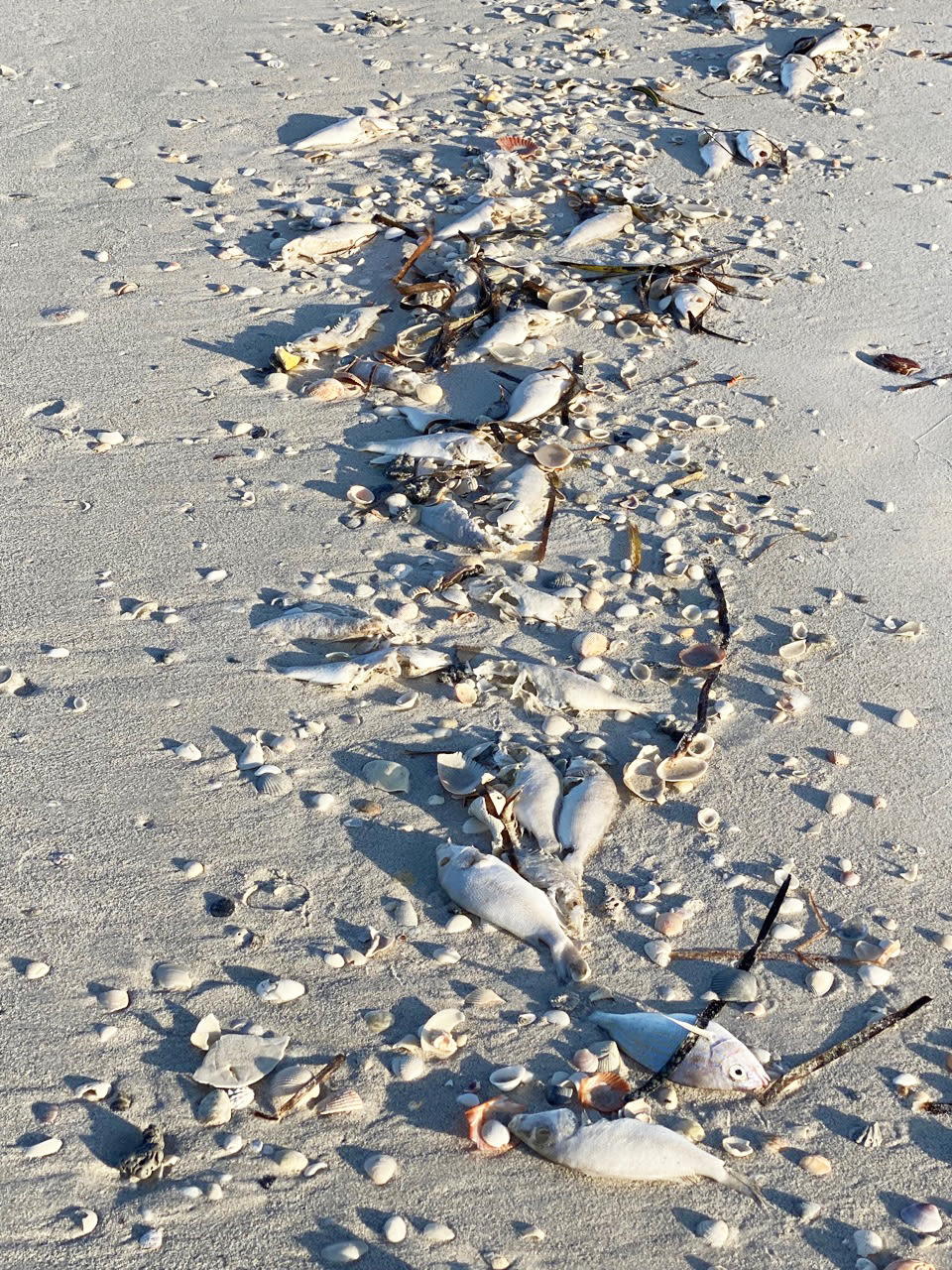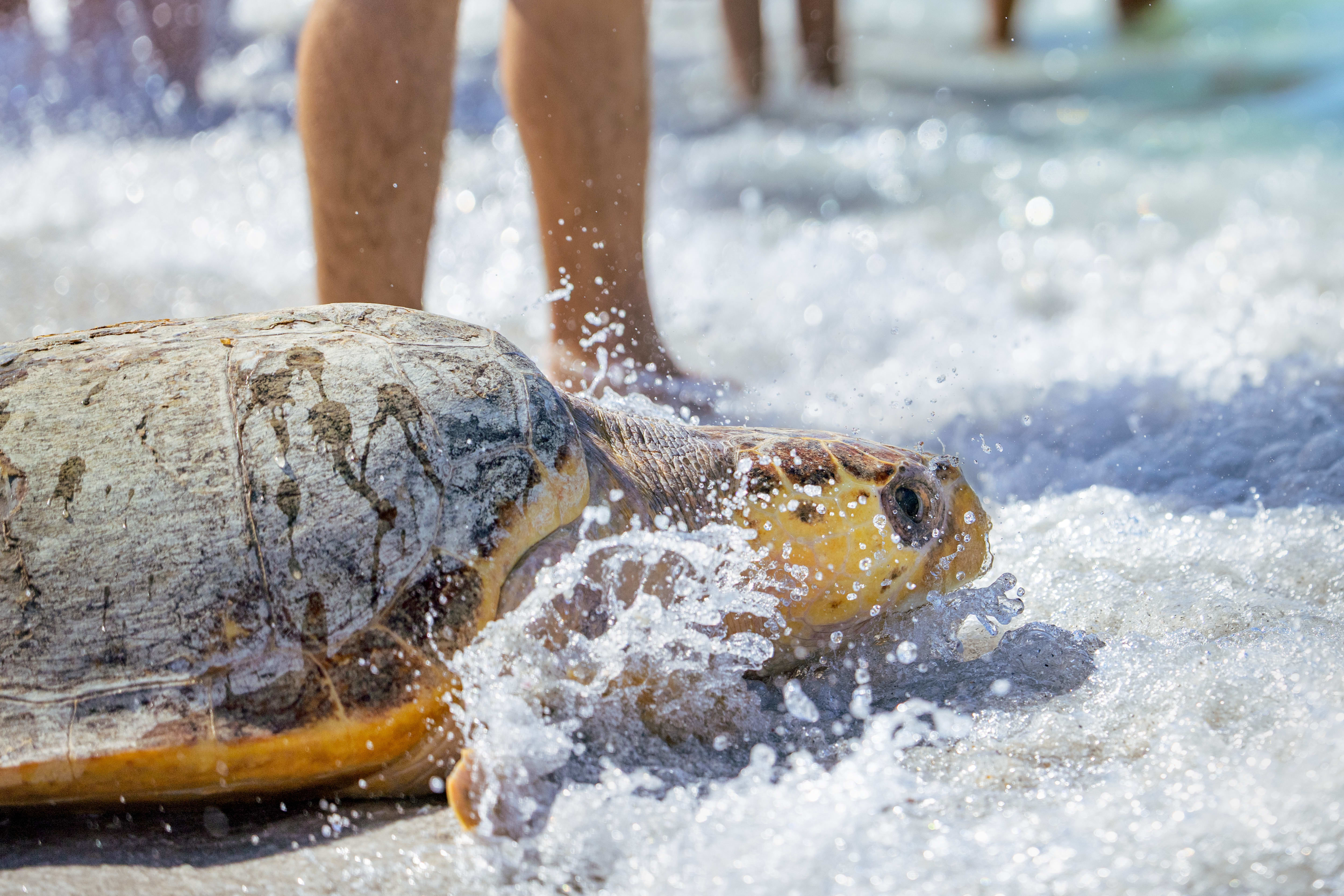Red Tide Is Back, and It's Not Going Away Anytime Soon

A red tide fish kill in 2018.
Image: Judy Burns
As of this week, roughly 100 square miles of Florida’s Gulf Coast waters are painted with red tide. The harmful algal bloom, which rocked Anna Maria and Longboat Key this past weekend, is now strongest around Venice inlet, but spans from the northern end of Longboat Key all the way down to Boca Grande, according to a satellite analysis done by Dr. Dave Tomasko, executive director of the Sarasota Bay Estuary Program.
According to Tomasko, this red tide is a continuation of the bloom that has been with us since after Hurricane Ian flushed untold amounts of nutrients into Sarasota and Tampa Bay. “After Ian, lower Sarasota Bay was in pretty bad shape for about 2-4 weeks, then it got better,” says Tomasko. “But how did it get better? By moving that load of stormwater runoff into the Gulf of Mexico.”
The red tide never went away, and what our region is experiencing now is a “harmful” algal bloom of Karenia brevis, which causes red tide. A "harmful" bloom means that there are more than 100,000 red tide cells per liter of water.
“At that level, you start to see fish kills, and it will bother people’s throats,” Tomasko says. “We are at 10 times that level right now.” Data from the last eight days shows areas with more than 1 million Karenia brevis cells per liter of water.
And it doesn’t look like it’s going to improve soon. When red tide levels get high enough to kill fish, the dead marine life acts as a fertilizer that feeds the algae, creating a toxic snowball effect that gets worse before it gets better. Tomasko says there are already dead fish in Sarasota Bay and parts of the barrier islands.
Why now? Our coast was given a reprieve from the red tide for a while, but now it’s back. So what causes ebbs and flows in red tide strength?
“We don’t cause red tides, but we can make them worse,” Tomasko says. “I think there are two things that are happening. We are loading our near-shore waters with nutrients—we certainly loaded a huge amount after Hurricane Ian came through—and we know the amount is increasing in Sarasota and Tampa Bay. Plus, our water isn’t getting as cold as it used to.” While scientists are still gathering data to see to what extent our waters have warmed, air temperatures over the past decade, which are much easier to measure than big bodies of water, are not as cold as they used to be.
“Remember all those people who were freaking out about the cold weather we had a month or two ago? That used to happen two to three times per year,” Tomasko says.
In order to fight red tide, Tomasko uses the analogy of a three-legged stool. He says we need these three groups to act in unison: the operators of wastewater and stormwater infrastructure (the permit holders), the regulators that oversee them (like the Florida Department of Environmental Protection), and the general public.
"We need the people who run wastewater treatment plants to feel empowered to take wastewater into consideration in the budget," Tomasko says. "Then we need regulators to do their job."
He points to the Bee Ridge Reclamation Facility, which dumped and spilled more than 700 million gallons of treated and raw wastewater into local waters. “It took five years for it to stop, and it stopped because of litigation, not government oversight,” he says. “We don’t need new rules. We just aren’t enforcing what we’ve got as fast as we can.”
And then there’s the general public's responsibility. “We could spend hundreds of millions of dollars on wastewater upgrades, but if people still over-fertilize their lawns and don’t pick up after their dogs, we won’t see much of a difference,” Tomasko says. “We need all three to do their part.”
As for what will happen with this current red tide bloom, some days might be better than others. Prevailing winds might push it further south or blow the scent right into town.
“It’s a really big red tide, and it’s going to be around for a while,” Tomasko says.



